- Home
- Chris Ryan
The Bay Bulls Standoff
The Bay Bulls Standoff Read online
The
Bay Bulls
Standoff
______________________________
Chris Ryan
Flanker Press Limited
St. John’s
Library and Archives Canada Cataloguing in Publication
Ryan, Chris, 1964-, author
The Bay Bulls standoff / Chris Ryan.
Issued in print and electronic formats.
ISBN 978-1-77117-355-1 (pbk.).--ISBN 978-1-77117-356-8 (epub).--
ISBN 978-1-77117-357-5 (kindle).--ISBN 978-1-77117-358-2 (pdf)
1. Crockwell, Leo. 2. Gunfights--Newfoundland and Labrador--
Bay Bulls. 3. Arrest (Police methods). 4. Criminals--Newfoundland
and Labrador--Bay Bulls--Biography. 5. Royal Canadian Mounted
Police--Biography. I. Title.
HV6810.B39R93 2014 364.9718 C2014-906803-4
C2014-906804-2
—————————————————————————————————————— ——————————————————
© 2014 by Chris Ryan
all rights reserved. No part of the work covered by the copyright hereon may be reproduced or used in any form or by any means—graphic, electronic or mechanical—without the written permission of the publisher. Any request for photocopying, recording, taping, or information storage and retrieval systems of any part of this book shall be directed to Access Copyright, The Canadian Copyright Licensing Agency, 1 Yonge Street, Suite 800, Toronto, ON M5E 1E5. This applies to classroom use as well.
Printed in Canada
Cover Design by Graham Blair
Edited by Susan Rendell
Flanker Press Ltd.
PO Box 2522, Station C
St. John’s, NL
Canada
Telephone: (709) 739-4477 Fax: (709) 739-4420 Toll-free: 1-866-739-4420
www.flankerpress.com
9 8 7 6 5 4 3 2 1
We acknowledge the financial support of the Government of Canada through the Canada Book Fund (CBF) and the Government of Newfoundland and Labrador, Department of Tourism, Culture and Recreation for our publishing activities. We acknowledge the support of the Canada Council for the Arts, which last year invested $157 million to bring the arts to Canadians throughout the country. Nous remercions le Conseil des arts du Canada de son soutien. L’an dernier, le Conseil a investi 157 millions de dollars pour mettre de l’art dans la vie des Canadiennes et des Canadiens de tout le pays.
Dedicated to the father of my children,
my best friend, Joey Wakeham (“Red”)
I started this book in October 2012, twenty-two months after the infamous December 2010 Bay Bulls standoff. The events, people, and conversations in this book are as valid as memory allowed. Some dialogue has been changed, added to, or altered for the benefit of the reader. I hope you enjoy it.
Chris Ryan
Bay Bulls
September 2014
Introduction
There is a folk legend living in Bay Bulls, on the Southern Shore of Newfoundland, by the name of Leo Crockwell. He ranks up there with legends like D. B. Cooper and Albert Johnson, the Mad Trapper of Rat River. This is the story of how Leo Crockwell took on one of the most revered police forces in the world, the Royal Canadian Mounted Police, and walked away unscathed.
On December 4, 2010, Leo Crockwell, fifty-five, an electrical technician and lifetime resident of Bay Bulls, barricaded himself in his mother’s house in Bay Bulls after an altercation with his sister involving a firearm. He held off members of the RCMP for a week. On the eighth day of the standoff, police realized they had been guarding an empty house overnight: Leo Crockwell had escaped.
For eight days my older brother Joe and I and a number of other residents camped out in the local gravel pit in our hometown. We were there out of concern for our friend Leo Crockwell.
The gravel pit is on the south side of Bay Bulls harbour. The Crockwell house is on the north side of the harbour, about half a kilometre from the pit. We picked the gravel pit for our stakeout since it is somewhat elevated in relation to the house, roughly twenty-nine metres above it. Also, at night it is very dark and the area is fairly uninhabited.
That first day, we decided we were in for the long haul. If the standoff went into the night, it would require expensive optics to collect low light and brighten the objects being viewed.
I’m recognized as one of the top birdwatchers in the province, being one of fewer than twenty people to document, in their birding careers, nearly 300 or more species of birds. To be a serious birder, you need optics. The optical equipment that I used during this standoff is the best that can be bought. My binoculars are Bushnell Elites, 10 x 42mm. Ten is the magnification number, which means the object being viewed appears ten times closer than with the naked eye. Forty-two is the diameter in millimetres of the objective lens, the glass at the front end of the binoculars. My spotting scope is a Swarovski AT80 HD 30-60x zoom. I shared my equipment with the other watchers: with these optics, people were able to look for hours without tiring or becoming bleary-eyed.
From our vantage point we could see everything that went on, practically every minute of every hour. We could pinpoint each and every sharpshooter. We knew where each of them lay: under a tree, behind a house, or around the corner of a garage. We even came to know which police vehicles would be used during certain routines every day. We could predict which ones would be positioned to stake out the northwest corner of the Crockwell property and which ones would go to Paddy’s Convenience for sub sandwiches and coffee and to Vincie Crane’s North Atlantic gas bar for fish and chips, and for whatever else was needed to feed the officers on duty, day and night.
We would watch them drive from point to point delivering food and coffee to their comrades. All weapons were laid down when these deliveries were made. Who was watching the house during these breaks? Absolutely no one. Sharpshooters would put down their weapons and walk away to the delivery vehicle, sometimes several hundred feet from their post.
At the gravel pit, we also had food delivered to us on occasion. We didn’t want to leave our stakeout location and miss any of the action for the want of food, either. My stepdaughter Stacie Wakeham brought food to us a number of times from the house in Witless Bay where I live with her mother, Tina, and her younger sister, Hollie.
Some of our family members, friends, and other residents of Bay Bulls made fun about our spending so much time in the gravel pit, but we were there out of concern for Leo. We wanted front-row seats to the action. We wanted to watch the police in case there were screw-ups: we would be witnesses for Leo. We thought we might have to go to bat for him with the media.
We observed many screw-ups during the standoff, which I sometimes call the Eight-Day Fiasco.
We knew Leo, and we were certain he would not give up easily. He was a very determined individual. This was repeated to the media by members of the Bay Bulls public many times during those eight days. They were told that Leo was not an average person, but an individual with a very high IQ.
So, when Leo made his Houdini-like escape and was located twenty-three kilometres away the day after his seven days of confinement, it verified what we’d been saying all week: if you had to choose ten people that were capable of eluding the RCMP, Leo would be at the top of the list.
Chapter 1
_____________________________________
Saturday, December 4
December 4, 2010, was no boring day in Bay Bulls. It was the day on which t
he most exciting thing happened in our town in living memory.
The standoff started at approximately eleven o’clock on that memorable Saturday morning. It was very cold, with the barometer hovering around three degrees Celsius. A northerly wind was blowing forty knots an hour and there was little to no snow on the ground.
As rumours starting spreading around the harbour, the reasons for the standoff started to emerge. Apparently Leo had had an altercation with his younger sister, Cathy. Cathy was a close friend of my older sister Anita when they were young, so I knew Cathy fairly well. They said Leo was holding a weapon, a rifle, as he followed Cathy and his mother, Margaret, out of his mother’s home, which was also his residence. Apparently Cathy and Marg Crockwell left in a hurry, running from the house.
Wade Mullowney, a neighbour and lifelong friend of the Crockwell family, was working on a garage nearby when he and his cousin Lloyd Mullowney heard the commotion. They went to the Crockwell house; Leo was standing outside with the rifle. He said to the Mullowney men, “Don’t believe a word they’re saying. They’re both nuts.”
Wade Mullowney didn’t know what to do. Should he turn a blind eye or call the authorities? It was a very hard decision. He had grown up next to the Crockwells and considered Leo a friend.
Leo had done a few wild things in his day, but nothing close to this. Wade knew the annual Kinsmen Santa Claus parade was going on in Witless Bay, a community five kilometres to the south of Bay Bulls. Not wanting the situation to escalate, he and his cousin got in his truck and drove to Witless Bay to notify the RCMP, who were patrolling the parade. Leo Crockwell’s mother and sister got in the truck with them.
Wade dropped Cathy and Marg Crockwell off at his home on Track Road Extension in Bay Bulls. Wade’s wife, Mary, welcomed the Crockwell women with open arms, and in short order she had the kettle on. She was concerned for the two women: Cathy had had many medical problems over the years, and her mother was in her mid-eighties.
Mary’s maiden name was Mulcahy, one of the oldest family names in Bay Bulls, as are Crockwell and Mullowney. All three surnames go back hundreds of years in the community. The Mullowney and Mulcahy roots are deep in the cod fishery that sustained Bay Bulls for close to 400 years.
When Wade and Lloyd reached Witless Bay, they looked across the harbour to the south side where they could see the Santa Claus parade. Wade very carefully worked his pickup truck around the floats and the groups of kids participating in the annual event.
The first RCMP officer he came across was a rookie. Wade asked this officer for the most senior officer in charge and was directed to the sergeant from the Ferryland detachment. Wade explained to her what he had witnessed at the Crockwell residence in Bay Bulls. The officer keyed her radio and ordered all RCMP officers involved in the parade to exit it immediately and go directly to Bay Bulls to investigate a domestic dispute. She told them to go to the gravel pit and wait there until she arrived: she would fill them in on the details of the situation when she got there. The sergeant was fairly new to the area and likely wasn’t expecting anything serious to happen at a rural detachment in Newfoundland. Gun crimes are very rare in the province, even though we have one of the highest guns-per-capita rates in Canada.
An RCMP cruiser containing two police officers flew from Witless Bay to Bay Bulls on that cold December morning. They were joined by two officers from the RCMP detachment in Holyrood. The officers were briefed by Billy Crockwell, Leo’s older brother, who lives in Goulds. He and other family members and friends of Leo’s gave the RCMP Leo’s mental health history and, no doubt, the police contacted their White Hills headquarters in St. John’s and the Royal Newfoundland Constabulary (RNC) to confirm the information.
Not one of the first four officers who arrived in Bay Bulls that morning had been on the force in 1998. They had never heard the name Leo Crockwell before, nor did they know anything about his history with Newfoundland Hydro. I believe that if the RCMP had not been told about Leo’s past, this standoff might never have occurred, or at least it would have been handled differently, treated as a simple domestic dispute. Once it began, it got bigger and bigger as the days passed and took on a momentum of its own.
In 1998, Leo Crockwell was detained at the Waterford Hospital in St. John’s for 140 days. An employee of Newfoundland Hydro, he was off work at the time because of irrational behaviour. Leo continued to show up at the Hydro offices, however, and the vice-president of Hydro contacted the police because she felt threatened by him. He was arrested at his mother’s home in Bay Bulls and taken to the Waterford, where he refused to be examined by psychiatrists. A psychiatrist who assessed him through Hydro had diagnosed him as a violent and dangerous paranoid schizophrenic. An independent assessment was agreed to, undertaken by two psychiatrists from outside the hospital. One of them found that Leo suffered from a mental disorder and could possibly be a risk to himself and others, but the specialist was not prepared to certify him and Leo was set free. Owing to the circumstances of his arrest, his detainment was later deemed to have been illegal under the Mental Health Act.
I was heading for Foodland on Saturday morning for the Telegram, 6/49 lotto tickets, and my weekly bottle of Johnny Walker Black, when I noticed Mark Tobin, a member of the band Fulley’s Gully, parked on Cemetery Lane East. He seemed to be looking across the river toward his grandfather Bernie Mullowney’s house. I stopped and asked him what was on the go. He told me that Leo Crockwell had had a dispute with his sister Cathy about a half-hour earlier and that the RCMP were at Crockwell’s. My mind raced: RCMP on scene; it must be serious. Where could I go to have a look at what was happening at the Crockwell home?
My first thought was the gravel pit. I knew it was elevated enough to get a better visual of Crockwell’s. I headed to the pit, thinking about all the trees that had grown around the rim of the pit in the past twenty years or so. Most of these are juniper, so I knew that they’d be bare of needles this time of year. Juniper is one of the few coniferous trees that lose their needles during the winter. When I arrived at the pit and scanned the Crockwell house with my binoculars, I noticed four or five Mounties spread out a fair distance from the Crockwell home. Most were standing behind structures such as houses, garages, and cars. I started calling a few hands to tell them what was happening. I called my brother Joe first, since he and Leo have been buddies since they were children. I then called some of our friends, and when they arrived we started trying to figure out what could have set Leo off to the point that the RCMP had been called. Our good friends Sharon O’Driscoll and Brenda Puddester got there about a half-hour after Joe did. Sharon told us the RCMP had shown up at her house and said she had to leave immediately.
By this time seven or eight more people had gathered at the gravel pit to have a look across the harbour. Everyone was trying to find the best spot for a gander, but the expert lookouts had taken the best spots. As the week progressed, people obligingly moved when one of these lookouts arrived, whether it was six o’clock in the morning or twelve o’clock at night. This was especially true in my case, since I would spend hour after hour relaying what I was seeing through my binoculars and scope from Joe’s SUV, which provided a little more elevation.
Sharon and Brenda went for a cruise around the harbour to see how many cops were in the harbour. When they got back around one o’clock, Leo’s first cousin Donna Glynn was with them. Donna said to us, “This is enough of this bullshit. Why are they doing this to Leo, a fellow who wouldn’t hurt a fly, and would give you the shirt off his back if you needed it?” She told us she was going to take a stroll over to see Leo. No big deal. No cops were going to stop her.
We all had a good old laugh when she informed us of what she was going to do. We weren’t laughing at Donna; we were laughing at the idea of anyone penetrating the wall of Mounties around the Crockwell house. Just how did Donna think she was going to get past all these police officers?
Do
nna said, “Sharon, drive me down to the Sapphire Pub.” The pub is directly across the road from the Crockwell house. Off they went, down the top road, the highway, with us in the pit watching the car like hawks. We were curious to see just how far Donna would get.
Sharon pulled in by the old Foodland situated in the building known locally as the Tin Can, a very large Quonset hut. The pub is behind the old Foodland.
When Sharon got back to the pit she told us that there were two RCMP cruisers parked by the entrance to the pub. The cars were facing each other, with one officer in each car. This hadn’t dampened Donna’s resolve. She’d gotten out and started strolling toward the pub. Sharon was certain that one of the officers would jump out of his cruiser at any moment and order Donna not to go any farther. Sharon just sat there, watching in amazement. Were these Mounties asleep? Here was Donna strolling freely to a residence they believed was housing a dangerous, armed individual. And yet, no one was stopping her.
In the pit, we were in the fits, laughing, amazed as we watched Donna walk past the two cops and to within twenty feet of Leo’s front door. Donna had walked approximately 800 feet before another officer swooped in and grabbed her.
The police officers who stopped Donna were from a ghost car south of the Crockwell house. This car was parked on the turn by the Catholic church, St. Peter and St. Paul, and close to the entrance to the Bay Bulls Marine Terminal. It was positioned there to block cars from going north up St. John’s Road. The ghost car reacted quickly, racing up St. John’s Road. Donna was not going to reach her target, but we couldn’t stop laughing. Little five-foot-two Donna Glynn from Bay Bulls had walked straight by two officers from one of the top police forces in the world without any effort at all. Another folk hero in the making. She got a free ride home, compliments of the Canadian taxpayer.
According to later court testimony, the officers from the Ferryland detachment were given approval from headquarters in St. John’s to try to make contact with Leo. They were advised to try to get him on the phone and were told not to go anywhere near the house under any circumstances.

 Global Strike
Global Strike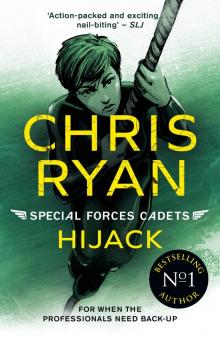 Hijack
Hijack Special Forces Cadets 2
Special Forces Cadets 2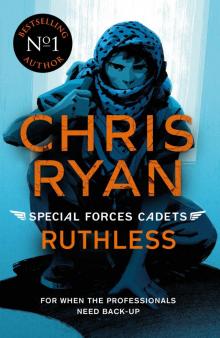 Ruthless
Ruthless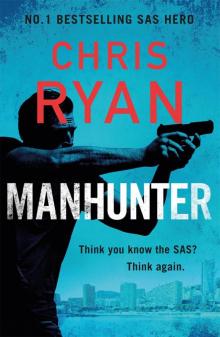 Manhunter
Manhunter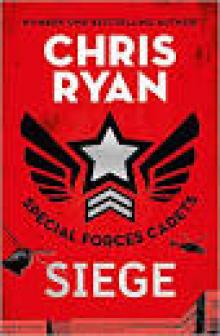 Special Forces Cadets 1
Special Forces Cadets 1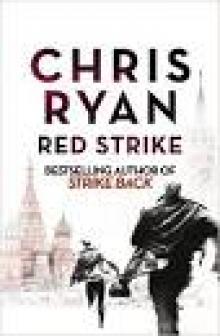 Red Strike
Red Strike Black Ops
Black Ops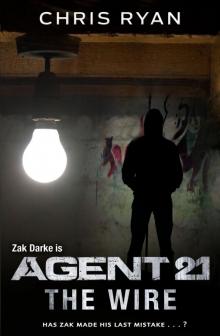 Agent 21: The Wire
Agent 21: The Wire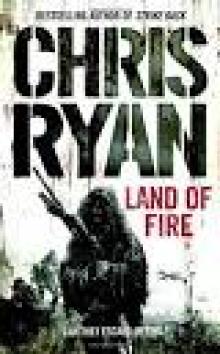 Land of Fire
Land of Fire Alpha Force: Fault Line
Alpha Force: Fault Line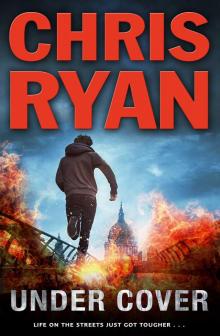 Under Cover (Agent 21)
Under Cover (Agent 21)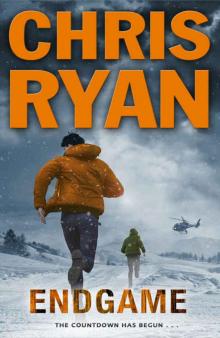 Endgame (Agent 21)
Endgame (Agent 21) Red Centre
Red Centre Blackout
Blackout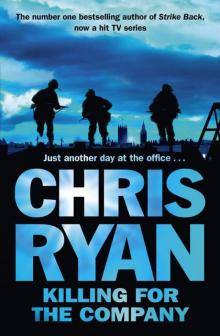 Killing for the Company
Killing for the Company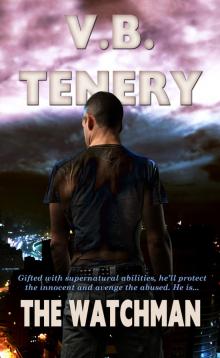 The Watchman
The Watchman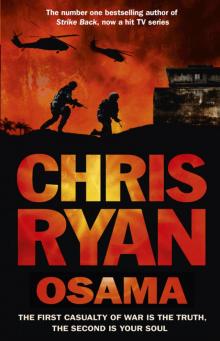 Osama
Osama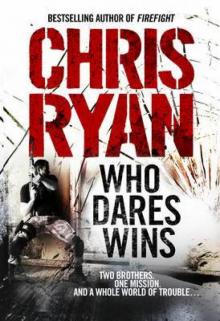 Who Dares Wins
Who Dares Wins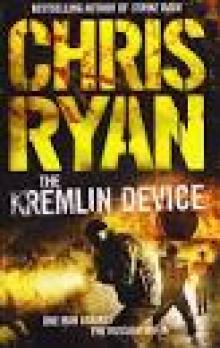 The Kremlin Device
The Kremlin Device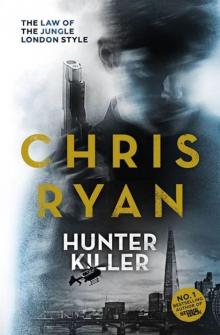 Hunter Killer
Hunter Killer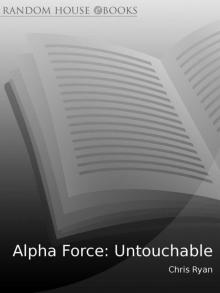 Alpha Force: Untouchable
Alpha Force: Untouchable Stand By Stand By
Stand By Stand By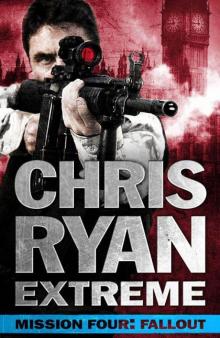 Chris Ryan Extreme: Hard Target: Mission Four: Fallout
Chris Ryan Extreme: Hard Target: Mission Four: Fallout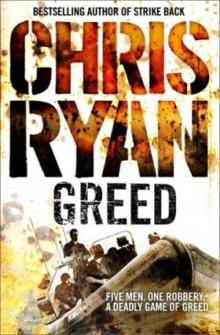 Greed mb-1
Greed mb-1 Alpha Force: Desert Pursuit
Alpha Force: Desert Pursuit Strike Back
Strike Back Greed
Greed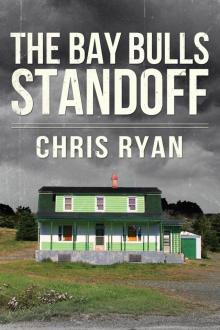 The Bay Bulls Standoff
The Bay Bulls Standoff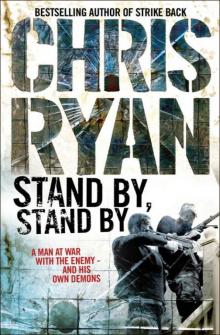 Stand By, Stand By gs-1
Stand By, Stand By gs-1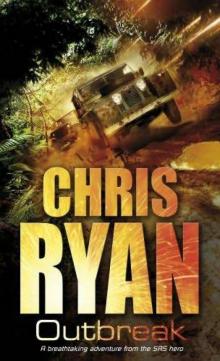 Outbreak
Outbreak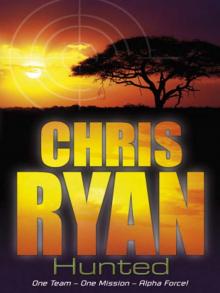 Hunted
Hunted Vortex cr-4
Vortex cr-4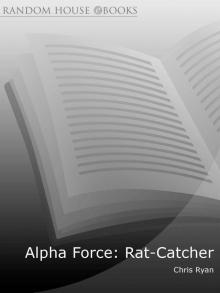 Rat-Catcher
Rat-Catcher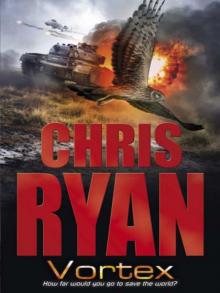 Vortex
Vortex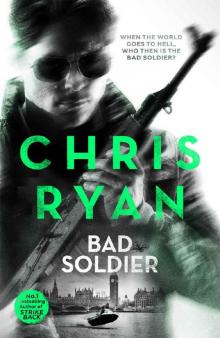 Bad Soldier
Bad Soldier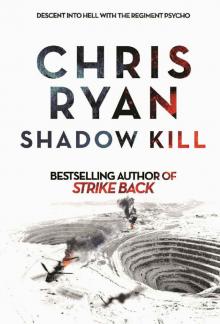 Shadow Kill: A Strikeback Novel
Shadow Kill: A Strikeback Novel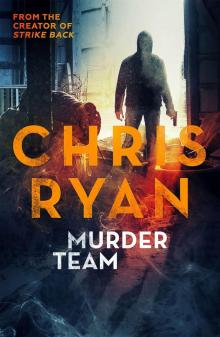 Murder Team (Kindle Single)
Murder Team (Kindle Single) One Good Turn
One Good Turn Flash Flood cr-1
Flash Flood cr-1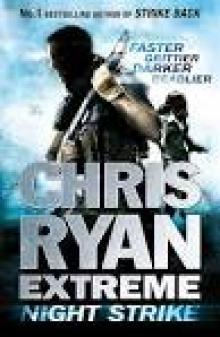 Night Strike
Night Strike Wildfire
Wildfire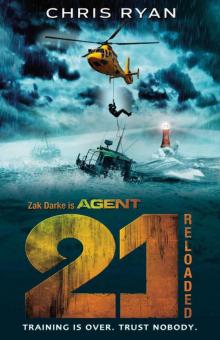 Agent 21: Reloaded: Book 2
Agent 21: Reloaded: Book 2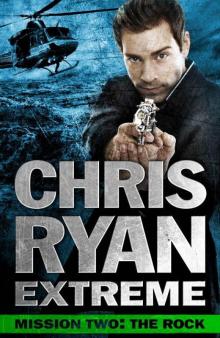 Chris Ryan Extreme: Hard Target: Mission Two: The Rock
Chris Ryan Extreme: Hard Target: Mission Two: The Rock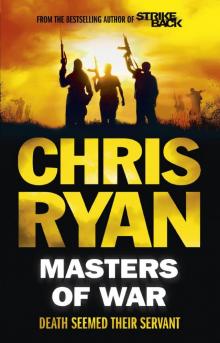 Masters of War
Masters of War Murder Team
Murder Team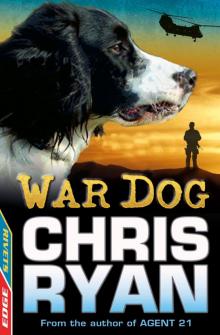 War Dog
War Dog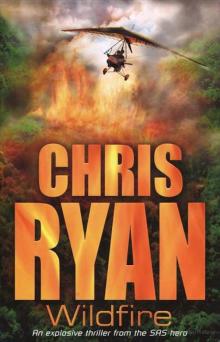 Wildfire cr-2
Wildfire cr-2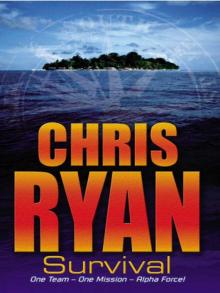 Survival
Survival The One That Got Away - Junior edition
The One That Got Away - Junior edition The Hit List
The Hit List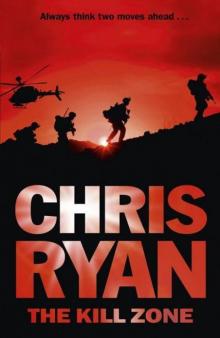 The Kill Zone
The Kill Zone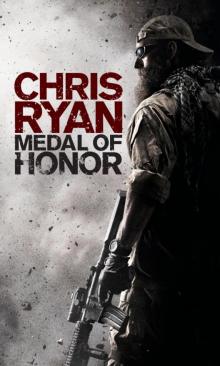 Medal of Honor
Medal of Honor Battleground
Battleground Twister
Twister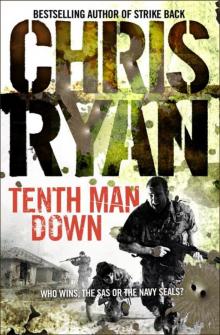 Tenth Man Down gs-4
Tenth Man Down gs-4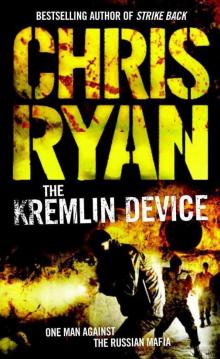 The Kremlin Device gs-3
The Kremlin Device gs-3 Hostage
Hostage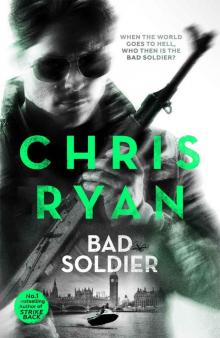 Bad Soldier: Danny Black Thriller 4
Bad Soldier: Danny Black Thriller 4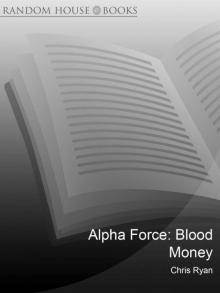 Alpha Force: Blood Money
Alpha Force: Blood Money Firefight
Firefight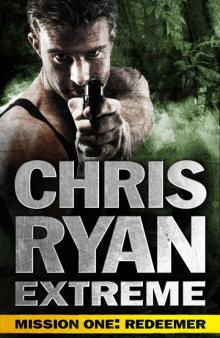 Chris Ryan Extreme: Hard Target: Mission One: Redeemer
Chris Ryan Extreme: Hard Target: Mission One: Redeemer Hit List
Hit List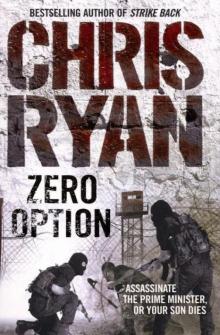 Zero Option gs-2
Zero Option gs-2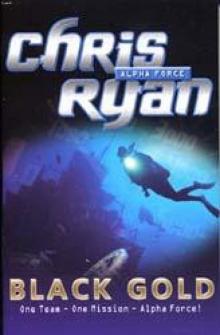 Black Gold
Black Gold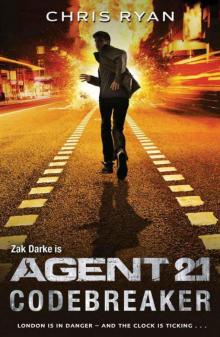 Agent 21: Codebreaker: Book 3
Agent 21: Codebreaker: Book 3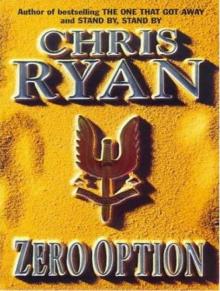 Zero Option
Zero Option Ultimate Weapon
Ultimate Weapon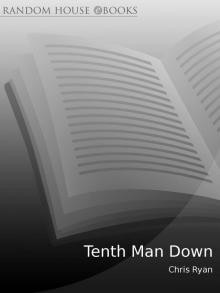 Tenth Man Down
Tenth Man Down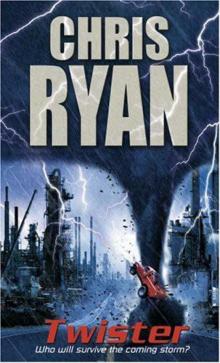 Twister cr-5
Twister cr-5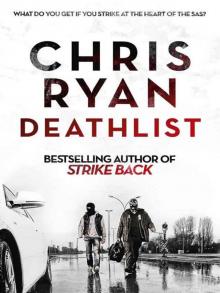 Deathlist
Deathlist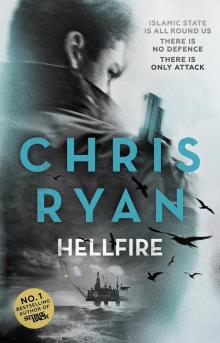 Hellfire
Hellfire Flash Flood
Flash Flood Battleground cr-6
Battleground cr-6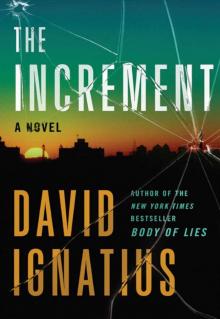 The Increment
The Increment